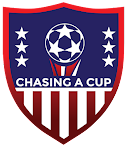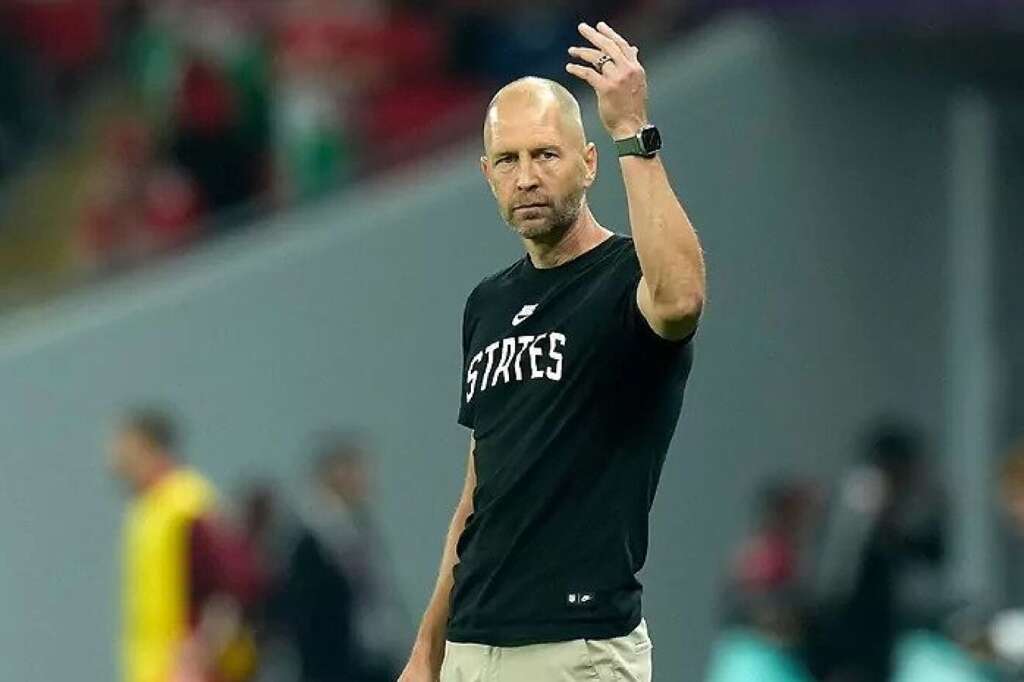

USMNT
The Curious Case of Gregg Berhalter
Published
3 years agoon
Gregg Berhalter’s contract has expired and we’re unsure of the next move for the manager or the US Men’s National Team. Jurgen Klinsmann and Bruce Arena left little to the imagination when they each lost their position as USMNT managers. They had not been able to qualify for the World Cup in 2018 out of CONCACAF and in Arena’s case not been able to even secure a draw against a lowly Trinidad and Tobago side. Berhalter is a much more interesting position with a network of converging storylines that make for intriguing decisions for both parties.
What did Gregg do and how will he be measured? What does USSF want to knowing they are hosting the World Cup and will have an incredibly talented team to build from for a 2026 run.
Qualifying & Expectations
Gregg was hired at a time when the US had failed to qualify for the world cup out of CONCACAF. After failing to qualify a number of US fan bases and independent media were born and grew out of the frustration of this experience. Scuffed Podcast, Underdog Soccer Podcast, Tactical Manager and 11Yanks are all core mediums that were born of and have grown a tremendous following in the wake of missing 2018.
Alexi Lalas had mentioned early in the process that this was the greatest group of American players assembled and expectations would be high for the new manager. There were trophies earned across the pool, Pulisic had some great moments in HUGE games for Chelsea, Weston McKennie was establishing himself as a key piece for Juventus in Italy, Tyler Adams and Brenden Aaronson at Leeds, a backline duo of Antonee Robinson and Tim Ream at Fulham, Tim Weah in France and Gio Reyna, the wonder kid, at Dortmund, Yunus Musah and Sergiño Dest in Spain (followed by Italy for Dest). The list goes on and on. The argument however, has been – how essential are these players for these key clubs. Are they scoring goals and providing true attacking impact in their roles? Can we produce a striker who can score to finish off goals in this talented pool of supporting attacking players?
The USMNT finished third and qualified for the 2022 World Cup in Qatar. Ultimately they qualified, but they were dominated by Canada drawing their first match at home and losing to an under manned Canadian team away. Though they defeated Mexico in qualifying, they finished below them in the standings as they were unable to put away some of their weaker opponents. It could have easily gone very differently either way during qualifying. The US should have scored to defeat El Salvador in their opener and looked desperately disorganized against Panama through most of the match before a halftime lineup change and Pepi’s substitution likely changed the course of qualifing and Berhalter’s legacy.
Gregg built a successful defensive side, that allowed very few goals during qualifying and played to Tyler Adam’s strengths gobbling up most of opposing teams threats through qualifying. The team struggled to score, identify a striker and find ways to score goals for three years. The inability to figure this out was apparent early and brought up by Gregg after the US’ loss to Holland.
Young & Inexperienced Group
The roster that Berhalter took on needed to be completely overhauled. There were very few pieces worth keeping from the previous cycle of an aged MLS retirement squad. However there was a tremendous young crop of extremely promising players coming up in the wake of the 2018 failure.
The minimal expectation was qualification and debate has raged over how challenging that process truly is for CONCACAF. This allowed for more of a microscope on Gregg’s tenure than many coaches ahead of their takeover had faced. Gregg’s mind was on regaining US presence and achieving World Cup qualification, but many fans strived for and demanded more. The quality of the talent he inherited were achieving historic success in Europe’s top leagues, Champions League and making a name for themselves at the highest levels of world football. They are also extremely young, Tyler Adams was the youngest captain at the tournament and the team was 2nd youngest at the tournament (25.2 years). That average was slightly higher in the tournament than it had been (<25 years) during qualifying, in their October qualifier against Costa Rica they had an average age of 22.2.

The debate on the talent level has raged for years. Very few players through qualifying and the tournament had ever experienced a World Cup, many had been a part of a qualifying cycle. Did this play a part in their success or failure? All this experience discussion not to mention that their leader Gregg himself had never managed internationally, never led or been a part of leading World Cup qualifying off the pitch.
During this qualifying process many questions around the US roster call ups were brought up. Gregg was extremely slow to retire players from his pool that were apparent to not be key contributors to the group especially glaring were players like Jackson Yueill, Sebastian Lletget and Aaron Long, who was included on the World Cup roster. Jesus Ferreira looked unready for the position of 9 this cycle, but was included anyway and showed poorly in the 45 minutes he was given in Qatar.
Further playing into this debate was the pool itself. Sergiño Dest selected the United States of America over pursuing an opportunity with Holland. Yunus Musah was eligible for Ghana, England and Italy, however he makes a shocking decision to play for the US. Was this the work of the Brian McBride, GM hired to help with internationals or Gregg’s personal efforts to build relationships with players and prospects players? Perhaps also encouraging his players to reach out to these dual nationals. There are enough rumors and personal stories that confirm Gregg was involved in several dual nationals decisions to make the case for his value there. This was perhaps his most impactful moves as a manager. Musah was part of the central midfield nicknamed “MMA”. This trio were immensenly impactful, critical even, to the US success and the best central midfield collective I’ve seen play.
The players had some learning experiences along the way. Weston McKennie in particular during World Cup qualifying got himself into trouble breaking protocol and was sent home. This was hugely debated at the time and questions galore, but has since clearly shown to be handled well. McKennie himself has praised how the situation was handled and Gregg restored McKennie to the lineup.
“I’m glad we’re addressing this right away. Because when this thing happened, we stressed the importance of us having a young team, people making mistakes and people being held accountable for their mistakes. And that’s exactly what it was and what it is,” Berhalter said.
For the most part Berhalter had a relatively successful brand with his core players who continued on the roster. However many fans have continued to wonder through rumors and other places how great Gregg’s relationship was with all players. John Brooks name and curious legacy has been dragged for two years now since he was dropped from WCQ and inexplicably been left out. Others like Matt Miazga have hinted at some future stories that may emerge once Gregg is no longer the manager.
A bizarre interaction with Gregg and media regarding Haji Wright after 45 minutes in June.
Additionally, Gregg caused unnecessary drama after the World Cup when he made comments at an event that was tied to Gio Reyna. This came at the time the Athletic was releasing a story around Reyna’s limited minutes and the reporting they had to why this was happening. Reyna will certainly be one of the rising stars in the 2026 cycle and widely considered one of the best American young players in Europe. That could lead to some challenges for Berhalter’s selection as a manager with the young star.
Gio Reyna on Instagram in response to Gregg Berhalter’s comments and reports he was nearly sent home from Qatar for his behavior in-camp. pic.twitter.com/n4UJqN7JMl
— Men in Blazers (@MenInBlazers) December 12, 2022
One final area that was noticeable during his tenure was his rare ownership of losses or failures. After the loss to Canada, Gregg was demolished by the media for saying that the US dominated Canada in a 0-2 loss.
“I think it was an entire team effort that was outstanding,” Berhalter said. “We asked them to be dominant, we asked them to embrace the conditions, embrace the physicality of going and I think we did that and more.
“It’s hard for me to remember a performance away from home this dominant without getting a result.”
After losing to Holland, instead of owning it as a manager and identifying the defensive weaknesses of his own side; he leaned into his striker problems:
WHAT THEY SAID: “We don’t have a Memphis Depay right now, who’s scoring in the Champions League,” Berhalter proclaimed, despite Memphis never scoring a Champions League goal since joining Barcelona. “[The Netherlands] were clinical in their [scoring] opportunities in the first half. Other than that, there wasn’t much separating the teams.”
Ironically many fans pointed out we have more statistically successful players in Europe and Holland’s manager Louis van Gaal pointed to tactical failures on the manager’s part.
‘Team USA didn’t adjust, they didn’t adapt,’ he said. ‘We based a tactical plan on that [targeting the flanks] that probably allowed us to win. ‘
Success
All the above is for not if a manager isn’t successful on the field of battle. Fair or not, that is how all managers are ultimately weighed. The challenge for USSF and for fans is what is the measure of success. Gregg came into the position with debatable success to begin with. Many fans were excited to see a coach who had taken a small market club with no budget into the playoffs. Others saw a manager who had failed and been fired in Europe and never won anything domestically.
Preparation for World Cup qualifying, building a roster, building a system – execution and quality for wins, bringing the locker room together under a shared vision and belief. These are difficult things to break down and measure in a manager, but let’s look at the body of work.
In preperation for World Cup qualifying it was a mixed bag of reactions to roster selections and style of play, but success against rival Mexico cannot be debated. The US defeated Mexico three times in 2021, winning the Nations League (one of the best feelings of the cycle for me), the Gold Cup (with our B team) and defeating Mexico at home with a classic and deeply meaningful 2-0 scoreline in World Cup qualifying.

Making Mexico is a CONCACAF minnow
— Ethan Zombek (@eszombek) December 15, 2022
The debate of course here, lies in seeing Mexico’s body of work for the year and their poor performance at the World Cup. This was clearly not the Mexico of old, missing key players and their young prospects not panning out as quality as the young Americans had. In addition, not scoring goals and the two defeats to Canada hurt Berhalter’s body of work.
Gregg struggled with in game tactics his entire tenure. He rarely made the right impact substitution or lacked what seemed to be the right tactical changes in those critical manager minutes from 60-80 to make any case that he had a good feel for the game, his subs were limited but often due to his own roster selection or lack of development errors and he rarely tactically how managed his opponent once they had the opportunity to engage.
That all said, Gregg helped the USMNT qualify for the World Cup. This is ultimately the most critical piece of manager responsibility in World Cup Qualifying is to qualify. The Italians amongst many other nations would gladly take a last place spot to have been included in the 2022 tournament. However, the qualifying process didnt appear to grant Gregg the opportunity to solve one of his most glaring issues on the attacking side of the ball.
At the World Cup the US missed a golden opportunity to defeat Wales. The draw came of all things, on a defensive error that led to a penalty. The US looked strong against England achieving a draw once again, though at times looking the more dangerous and better side – especially in the midfield. Giving the Captain arm band to Adams, helping Weston McKennie navigate breaking team rules and recruiting Yunus Musah perhaps making Berhalter’s decision making important here. These two results however led a very talented team to a must win game against Iran which they ultimately did win 1-0. It was once again a debated result. The job of a team in a tournament is to move on yes, but many fans felt it was unconvincing and the inability to win against Wales forced Berhalter to play a tired starting XI too many minutes.
The US lost in the first group stage to the Netherlands 3-1. Not a side that is embarrassing to lose to, but certainly a scoreline not indicative of a strong defensive minded manager. The goals against were not prolific, but often missed assignments, perhaps from tired legs. The US had opportunity to draw this game down 2-1 after scoring to get in the game there were missed chances. Who is to blame? The debate rages on, but ultimately a win against Iran and two draws are what Berhalter’s young side come home with.
Next Steps
The US have increased their Elo ranking, remained undefeated against England and dominated Mexico in 2021. As stated above perhaps Berhalter’s biggest accomplishment was his potential involvement in the dual national recruitment arena. The team structure and culture overall seemed to be solid, though as pointed out above plenty of cracks in the walls. Most of the key items pointed out in Bob Morocco’s response below:
Pro’s:
— Bob Morocco (@bob_morocco) December 14, 2022
-Overall Good Results: moved the USMNT from an Elo ranking in the 30s to the 20s. Largely better results than past managers against all level of opponent.
-Dual National Recruitment: Dest and Musah alone are hugely valuable.
-Defensive Structure: both in possession and… https://t.co/ncWLUM42mI
What ultimately does the US want to look like and what are they planning and hoping to accomplish in 2026?
Gregg’s tactical strength were improving the defensive identity in the US, however in a few critical games we seemed to give key goals or make defensive errors (2-0 loss to Canada, 3-1 loss to Holland). Few of the backline will likely be part of a 2026 run – Dest, Antonee Robinson are likely, Joe Scally could be competing and it is likely Cameron Carter-Vickers and possibly Walker Zimmerman could compete at CB. It’ll be on the attacking side of our game we’ll need to improve and this area has not been Gregg’s strength. Gregg didn’t show a strong in game tactical management to make crucial changes that would shift the course of a game in the way we’ll need to make a deep run.
Gregg was a fantastic dual national recruiter and that was critical, how many more dual nationals are out there and can McBride with a new manager and a strong model replicate this? That will be difficult to measure and assess. Gregg’s cracks and flaws showed both in his commentary and some of his relationships. He often gave preference to domestic camp players and hung on to poor performers past when the player was losing their traction even in their own clubs. The lack of depth showed in the World Cup and would need improvement for a 2026 run.
Gregg has won Nations League and Gold Cup, but has few international successes or trophies, nor any improvement in is resume to show that he would have the caliber or tactics to really shift the mindset of even is existing players on how to level up from where they have performed. Few of even our top players outside of perhaps Christian Pulisic and Tyler Adams showed even as much of the qualities they’ve possed for their club for the national team.
For all the positives many fans have on Gregg Berhalter certainly the gap between good and great was apparent to all. Perhaps event to Gregg himself, who may want to pat himself on the back, say job well done and return to his favored club coaching career.
Can the US draw and inspire a successful international or touted club tournament manager into making a go of a run with the USMNT fan base and the host nation marketing that will come for that manager? Certainly that won’t inspire a top club manager, but may provide additional funding to make the pay competitive and the spotlight of a massive sports nation interest to glory seekers. The answer to that will define what’s next.
You may like
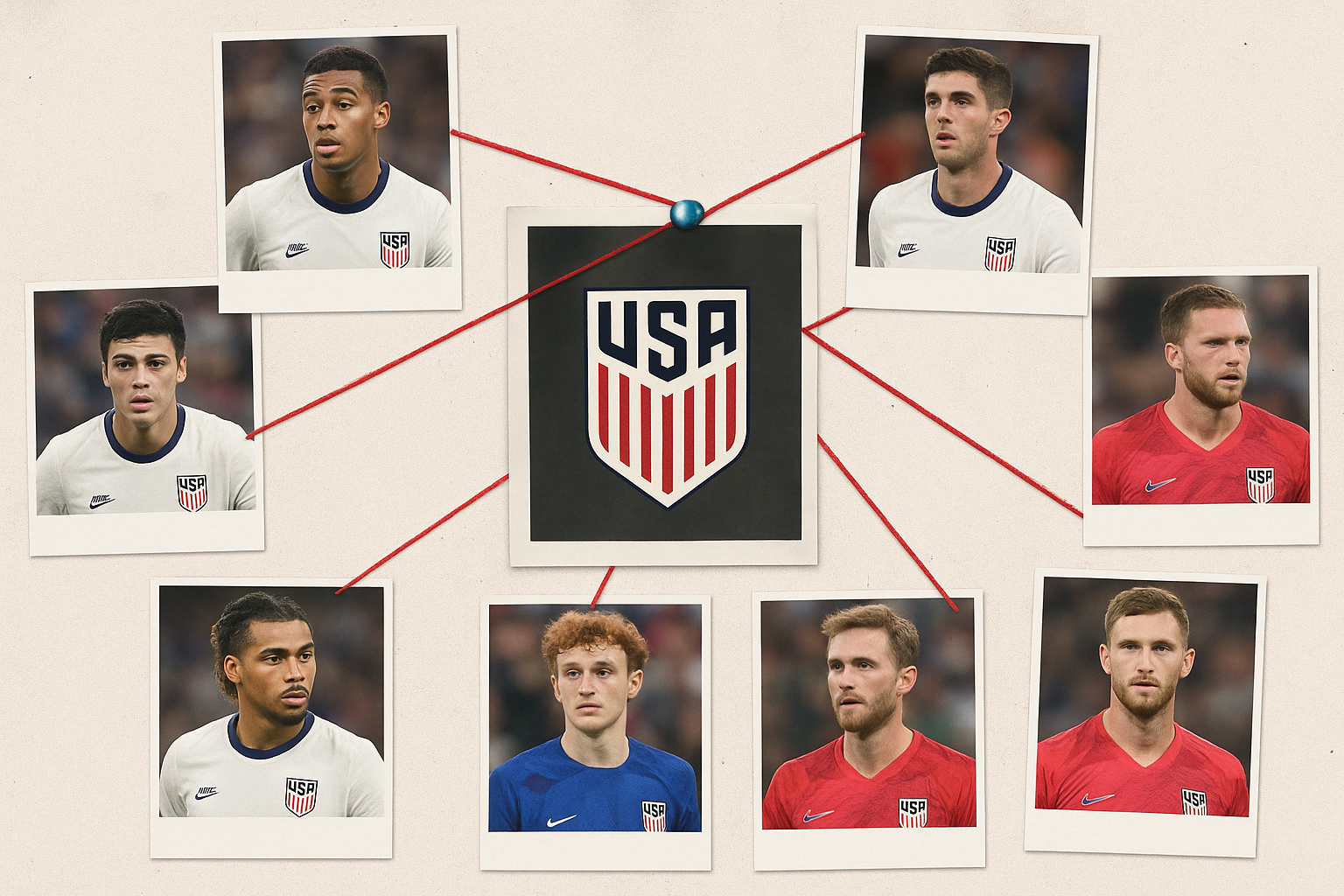
Thomas Deschaine (@uskeeper on X and us_keeper on Instagram)
With the September FIFA window now in the rearview mirror, and only three more windows left before final rosters are set in late May or early June 2026, Mauricio Pochettino has drawn a clear line.
He’s stated that September’s camp was the “last camp to have the possibility for new faces.”
If we take him at his word, the nearly 70 players who’ve been called across six camps and the Gold Cup will form the pool from which he selects the 2026 World Cup squad.
Of the 60 players named to the 2025 Gold Cup provisional roster, only five, Maxi Dietz, Richie Ledezma, Tim Tillman, Caleb Wiley, and Griffin Yow, have yet to appear on a #USMNT roster under Pochettino.
Comparing the 2025 Nations League provisional roster to the Gold Cup list reveals over a dozen different players, raising the question: are these minor differences simply the edges of the player pool Pochettino intends to draw from?
Goalkeepers
Nine goalkeepers have been called into Pochettino’s camps, but it’s clear that Matt Freese is his first-choice right now, with Matt Turner likely the No. 2 as we sit just 10 months from the World Cup.

- Chris Brady
- Drake Callender
- Roman Celentano
- Matt Freese
- Ethan Horvath
- Jonathan Klinsmann
- Diego Kochen
- Patrick Schulte
- Zack Steffen
- Matt Turner
Fullbacks
Outside of Sergiño Dest and Antonee Robinson, the USMNT’s fullback depth remains a concern. Pochettino appears high on MLS defenders Alex Freeman and Max Arfsten, while Caleb Wiley, though yet to feature in a USMNT camp but named to recent provisional rosters, could still be on his depth chart.
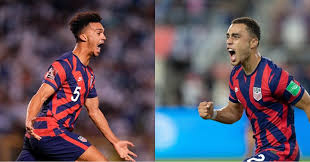
- Max Arfsten
- Sergino Dest
- Alex Freeman
- Marlon Fossey
- DeJuan Jones
- Kristoffer Lund
- Shaquell Moore
- Antonee Robinson
- Joe Scally
- John Tolkin
Centerbacks
Center back remains another position with uncertain depth. Chris Richards and the veteran Tim Ream look like locks for now, leaving three spots up for grabs. If Pochettino opts for a back three, that tactical shift could influence which players ultimately make the cut. Notably, Jackson Ragen and Maxi Dietz are the only center backs from the recent provisional rosters who haven’t been called into a USMNT camp.
- Noahkai Banks
- Tristan Blackmon
- George Campbell
- Cameron Carter-Vickers
- Mark McKenzie
- Tim Ream
- Chris Richards
- Miles Robinson
- Auston Trusty
- Walker Zimmerman
Central Midfielders
The central midfield position is the deepest for the #USMNT, with many players in the pool capable of also playing fullback, center back, or winger. Although Richie Ledezma has primarily played as a right back and right wing-back for his current club and for PSV last season, USMNT coaches view him primarily as a midfielder. This likely explains why he hasn’t yet been called into a USMNT camp.
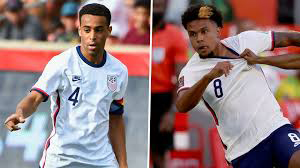
- Tyler Adams
- Sebastian Berhalter
- Gianluca Busio
- Johnny Cardoso
- Ben Cremaschi
- Luca de la Torre
- Emeka Eneli
- Jack McGlynn
- Weston McKennie
- Aidan Morris
- Yunus Musah
- Tanner Tessmann
- Sean Zawadzki
Attacking Midfielders
There are several players at this position who could add real quality and play pivotal roles for the #USMNT at next summer’s World Cup. Gio Reyna remains a major question mark, but his talent is undeniable. With his recent club change, there’s hope he can return to the high level of form we’ve seen from him in the past.
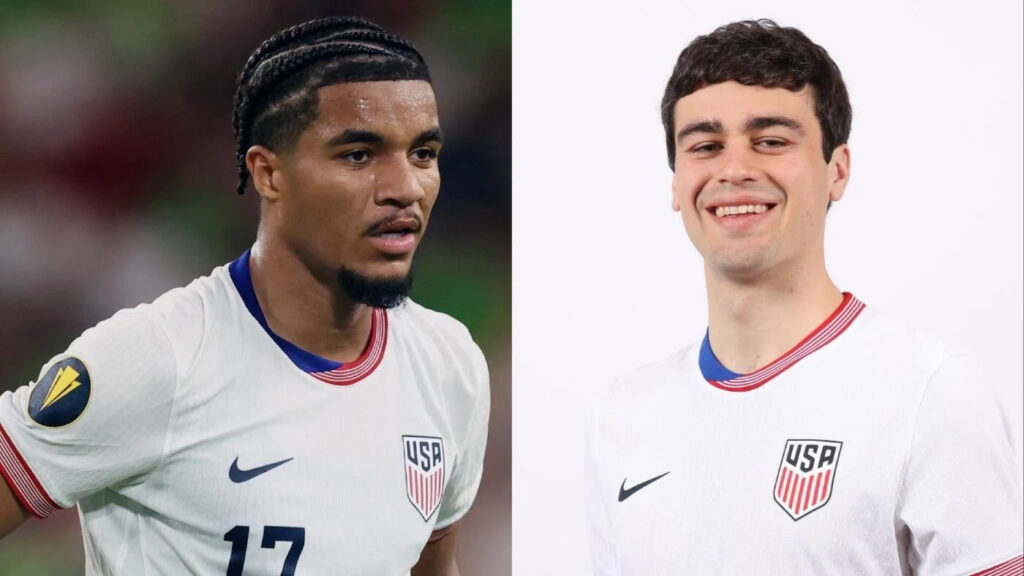
- Brenden Aaronson
- Paxten Aaronson
- Brian Gutiérrez
- Djordje Mihailovic
- Matko Miljevic
- Gio Reyna
- Malik Tillman
Wingers
The winger position remains thin for the #USMNT, though several players there can also slot in as attacking midfielders, strikers, or even fullback. Notably, two young wingers, Cole Campbell and Griffin Yow, appeared on provisional rosters but have yet to be called into any Pochettino camp.
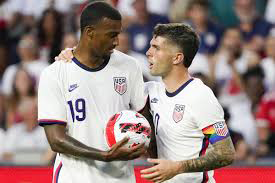
- Cade Cowell
- Diego Luna
- Christian Pulisic
- Quinn Sullivan
- Indiana Vassilev
- Tim Weah
- Haji Wright
- Alejandro Zendejas
Strikers
Another area of concern for the USMNT is striker depth. While the top options have all produced well for their clubs when healthy, injuries have kept the pool thin. If everyone is fit, the primary competition for the starting role likely comes down to three players: Folarin Balogun, Ricardo Pepi, and Josh Sargent. Haji Wright and Tim Weah can also step in as center-forward options if needed.
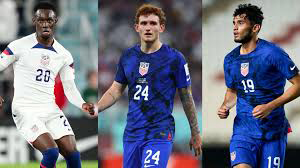
- Patrick Agyemang
- Folarin Balogun
- Damion Downs
- Jesus Ferreira
- Ricardo Pepi
- Josh Sargent
- Brandon Vazquez
- Brian White
Conclusion
It’s tough to read Pochettino’s mindset right now. Many expect fewer MLS players to be called for the October window, partly because the league continues through FIFA dates and the regular season ends mid-October.
Most World Cup rosters largely select themselves, with only a few surprising omissions, think of the 1994 squad, which left out several players many felt deserved a spot.
But with Pochettino still showing a shaky grasp of the USMNT player pool, this cycle could produce more notable snubs than ever, though there’s still time for him to get it right.

- Caring for Villa Hills, Fort Thomas, Union, Florence, Crestview Hills and Northern Kentucky
Over the past few years, I’ve written here at Chasing A Cup about family, faith, leadership, and walking through life with intention. Some of you have been reading since the early days. Some of you prayed for my family. Some of you even rolled up your sleeves and gave blood — blood that was meant for my mom and others like her in their time of need.
I’ll never forget that.
Three years ago, my mom passed away. It was a season of heartbreak, but also one of clarity. As I stood beside my family — and as I supported others in our community grieving their own parents — I came to understand how deeply care matters. Not just in hospitals or emergencies, but in the everyday: the quiet, complicated, deeply human moments that make up the final chapters of someone’s life.
That realization stayed with me. And over time, it changed the direction of my work.
For most of my career, I worked in product management — building teams, delivering systems, and leading with structure and strategy. I still believe in all of that. But I also wanted to build something more personal. Something rooted not just in outcomes, but in presence and compassion.
That’s why Sarah and I decided to open a Caring Excellence office in Northern Kentucky.
Caring Excellence has been serving families across Kentucky for over 13 years. It’s a family-owned, fully licensed home care agency that specializes in non-medical, in-home support for seniors and adults — help with daily living, memory care, companionship, and more. And now, we’re proud to bring that same level of compassionate, character-driven care to Florence and the surrounding region.
Our new Northern Kentucky office serves families in places like Villa Hills, Union, Fort Thomas, Crestview Hills, and Florence — communities filled with multi-generational households, strong family ties, and seniors who deserve to age with dignity.
At Caring Excellence, we focus on people first. We don’t just fill schedules — we carefully match caregivers to clients based on personality, needs, and values. Sarah leads our caregiver hiring, drawing from her years of experience as both a caregiver and healthcare professional. She looks not just for skill, but for heart — people of integrity, empathy, and real compassion.
As for me, I now use my business background to support the team behind the scenes — building systems, developing processes, and making sure our caregivers have the tools and training they need to serve others well.
This new venture is deeply personal. It’s also missional. It’s about stepping into people’s lives when they need support most and offering something simple, but powerful: peace of mind.
We’re not moving to Florence, but we’re fully committed to this region. We’re investing in it — by hiring local caregivers, building relationships with local providers, and offering families home care in Northern Kentucky a trusted option for high-quality home care.
To those of you who’ve been on this journey with me — through writing, through prayer, through donating blood when we needed it most — thank you. I hope this new chapter reflects what we’ve always believed in here: that service matters, character counts, and small acts of care can ripple further than we think.
If you know someone in Northern Kentucky who needs support — in Union, Villa Hills, Crestview Hills, Fort Thomas, or Florence — we’d be honored to walk alongside them.
Thanks for reading, and for being part of the story.
—Marcus
Learn More
To learn more about Caring Excellence and our in-home care services for Northern Kentucky families, visit:
https://caringexcellenceathome.com/northern-kentucky-office

Thomas Deschaine (@uskeeper on X and us_keeper on Instagram)
Not long ago, winning your confederation’s tournament earned a spot in the FIFA Confederations Cup, a prestigious competition held in the World Cup host nation the summer before the world’s biggest tournament.
The tournament featured the champions of all six confederations (AFC, CAF, CONCACAF, CONMEBOL, OFC, and UEFA), along with the reigning FIFA World Cup winner and the host nation, rounding out the field to eight teams. The tournament was last played in 2017.

The Concacaf Gold Cup is a semi-cycle tournament played in the first and third years of the cycle. The CAF Africa Cup of Nations is the only other confederation that plays two tournaments a cycle, and in many circles, the frequency of the Concacaf Gold Cup and the addition of the Concacaf Nations League has made the Gold Cup a throwaway tournament for the USMNT, as it’s been six years since the so called A list player pool has played in the event.
It raises the question for FIFA and Concacaf: should the Gold Cup be played once a cycle, and should FIFA consider bringing back the Confederations Cup?
The USMNT won the inaugural Gold Cup in 1991 and has claimed seven of the 17 editions since. Only two other CONCACAF nations Mexico (9) and Canada (1)—have lifted the trophy, and both are contenders in this edition.
The USMNT has a strong track record at the Gold Cup, finishing first in their group every year except 2011. They’ve reached 12 finals, with a record of 69 wins, 12 draws, and 9 losses, scoring 189 goals and conceding just 60

Gold Cup Player Stats
Across 17 editions of the Gold Cup, the USMNT has netted 189 goals, conceded just 60, and recorded 50 clean sheets. Here’s a look at the players who made it happen, those who found the back of the net, and those who kept it out.

Goals
18-Landon Donovan
13-Clint Dempsey
9-Eric Wynalda
8-Brian McBride
7-Jesus Ferreira
Assists
16-Landon Donovan
7-Michael Bradley
6-DaMarcus Beasley
6-Alejandro Bedoya
6-Eric Wynalda
5-Clint Dempsey

Wins
17-Kasey Keller
11-Tim Howard
8-Tony Meola
7-Matt Turner
Shutouts
14-Kasey Keller
8-Tim Howard
6-Tony Meola
6-Matt Turner

Captain
10-Michael Bradley
10-Kasey Keller
9-Carlos Bocanegra
8-Tony Meola
7-Claudio Reyna
Gold Cup Manager Stats
Over the past 34 years, the USMNT has reached 12 of the 17 Gold Cup finals under the leadership of seven different managers. Here’s a look at how each of them performed.

Matches Coached
25-Bruce Arena
18-Bob Bradley
12-Gregg Berhalter
12-Jurgen Klinsmann
10-Bora Milutinovic
8-Steve Sampson
5-B.J. Callaghan
Matches Won
19-Bruce Arena – GF-52-, GA-14
14-Bob Bradley – GF-34, GA-17
11-Gregg Berhalter – GF-26, GA-3
9-Jurgen Klinsmann – GF-32, GA-9
8-Bora Milutinovic – GF-15, GA-8
6-Steve Sampson – GF-14, GA-5
2-B.J. Callaghan – GF-16, GA-4
Gold Cup Trophies
3-Bruce Arena
1-Gregg Berhalter
1-Bob Bradley
1-Jurgen Klinsmann
1-Bora Milutinovic
Conclusion
In the future, U.S. Soccer and the USMNT should clearly communicate roster expectations for the Gold Cup, especially if a full A-list squad is not planned. Transparency on this front is essential, as it directly affects fan interest and attendance.
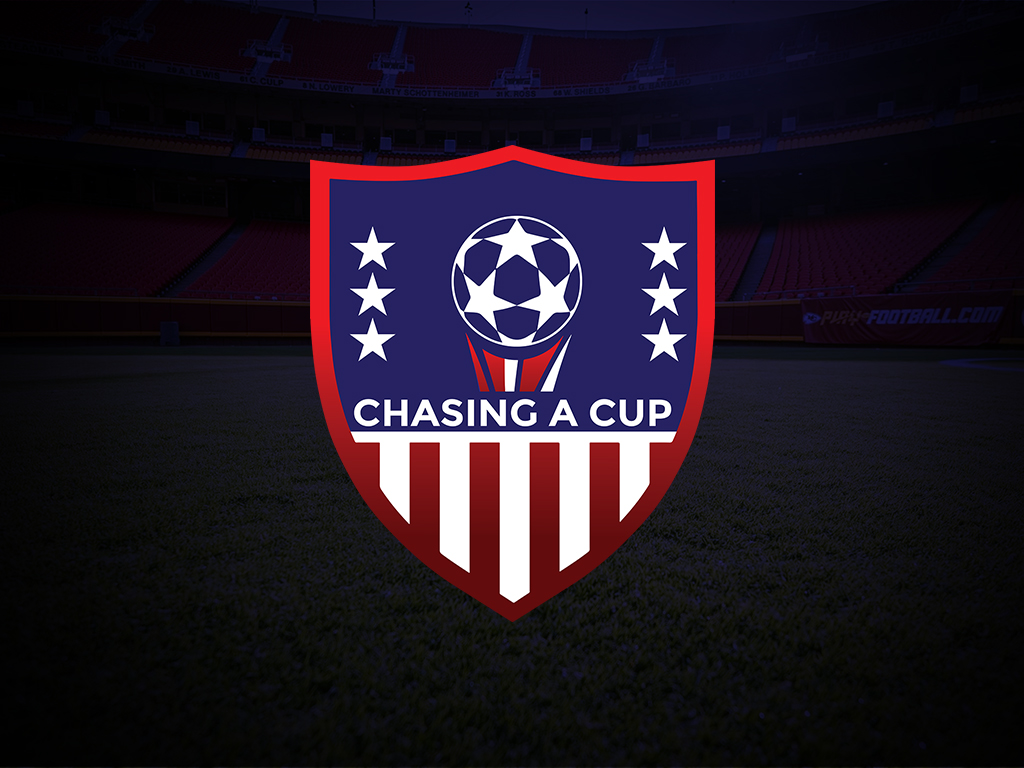

The constructing of a World Cup roster

Launching Caring Excellence in Northern Kentucky

Concacaf Gold Cup is becoming tarnished

Trending
-

 Club News1 year ago
Club News1 year agoAmerican Transfers: Stock Up & Stock Down
-

 USMNT2 years ago
USMNT2 years agoUSMNT Kits Come in Different Styles and Colors
-

 Club News6 years ago
Club News6 years agoJulian Vincente Araujo
-
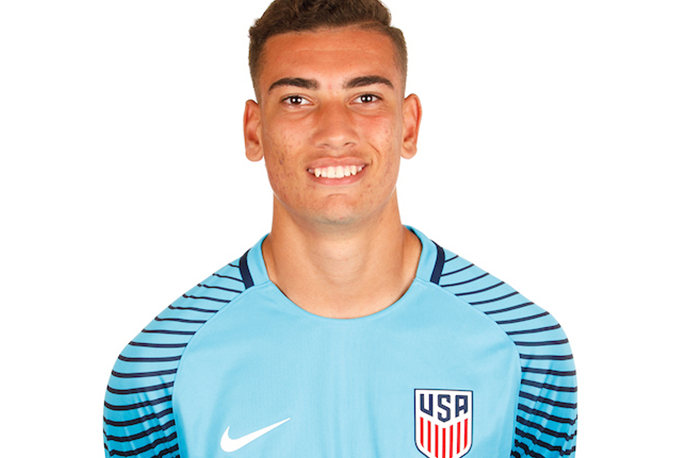
 Club News5 years ago
Club News5 years agoCJ dos Santos, Benfica
-

 USMNT5 years ago
USMNT5 years agoA Hidden Gem: Barça Residency Academy
-

 USMNT1 year ago
USMNT1 year agoIs the MLS Specifically Targeting Expansion to USL Cities?
-
USMNT3 years ago
World Cup Format History
-
USMNT6 years ago
MLS Quota

